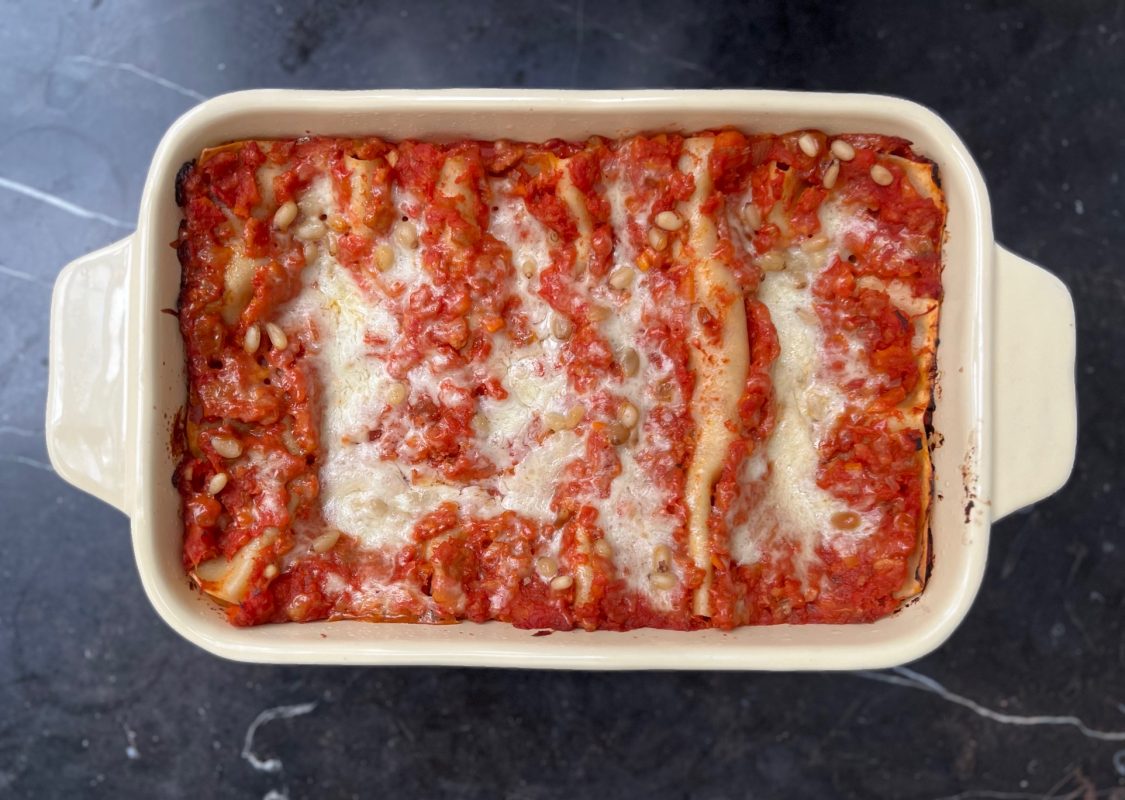Vegetarian Lasagna Bolognese
This lasagna is definitely one of our favorite family dinners — everyone loves it! It’s nourishing, comforting, and surprisingly light. With only 460 kcal and 28 g of protein per serving, it’s rich in protein and relatively low in calories.
For the sauce, I use whatever tomato products I have on hand — tomato cubes, passata, or a mix of both.
This recipe makes 4 large servings or 8 more modest-sized portions. I use a deep lasagna dish for this vegetarian lasagna Bolognese, but if your baking dish is smaller and you end up with leftover sauce, you can freeze it for up to 3 months.
This vegetarian lasagna Bolognese is rich in plant-based protein and fiber from the textured soy protein, making it both filling and nutritious.
This recipe is a great way to enjoy a classic comfort food in a lighter, vegetarian version. If you prefer a richer flavor, you can add a bit of grated Parmesan on top before baking or swap in a mix of other cheeses (I like to add a bit of Gruyère or matured Cheddar). Enjoy!
- Ingredients
- 1 cup (240 ml) water or vegetable stock
- 2 tbsp soy sauce
- 1 tbsp tomato paste
- ½ tsp onion powder
- ½ tsp garlic powder
- ½ tsp paprika powder
- 100 g textured soy protein
- 1 tbsp olive oil (plus extra for greasing the lasagna dish)
- 1 large carrot
- 1 large yellow onion
- 2–3 celery stalks
- Salt, to taste
- 100 ml red wine (optional)
- 800 ml canned tomato cubes
- Lasagna sheets, as needed
- 150 g shredded mozzarella (or mix with Gruyère and/or other types of cheese)
- 50 g pine nuts
Method
Prepare the soy protein: In a pan, dissolve the tomato paste, soy sauce, onion powder, garlic powder, and paprika powder in the water or vegetable stock. Add the textured soy protein to the liquid and bring it to a gentle boil. Reduce the heat and simmer with the lid on for about 30 minutes, until the protein absorbs most of the liquid.
Make the sauce: While the soy protein is simmering, prepare the vegetable base for the sauce. Use a food processor to finely chop the carrot, onion, and celery stalks until they have a coarse, bread crumb-like texture.
Cook the vegetables: Heat the olive oil in a large saucepan over medium heat. Once hot, add the processed vegetables, season with salt, and cook for about 5 minutes until softened. If using red wine, add it now and let it cook off completely.
Add the tomatoes: Once the wine has evaporated, add the canned tomato cubes to the pan. Stir and bring to a gentle boil. Lower the heat to medium-low and let the sauce simmer.
Combine with soy protein: After the soy protein is done, briefly process it in the food processor to break it up into smaller pieces. Add it to the tomato sauce and continue cooking on low heat for about an hour, stirring frequently. If you're short on time, you can skip this step and use the sauce immediately, but for best flavor, allow it to sit for 1-2 hours to blend the flavors.
Assemble the lasagna: Preheat the oven to 200°C (390°F). Lightly grease your lasagna dish with olive oil. Cover the bottom of the dish with lasagna sheets. Add a couple of ladles of the sauce (or as much as needed), then sprinkle with a generous amount of shredded mozzarella and a small handful pine nuts. Repeat this process until you run out of sauce. The top layer should be sauce topped with mozzarella and pine nuts.
Bake: Cover the lasagna dish tightly with aluminum foil and bake it in the preheated oven for 25-30 minutes. After this, turn off the oven and let the lasagna sit in the cooling oven for an additional 30 minutes.
Serve: For the best experience, let the lasagna cool for another 30 minutes before serving. (But, let's be honest—sometimes it's impossible to wait!)


